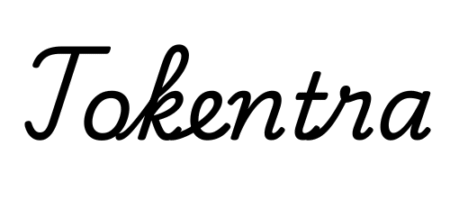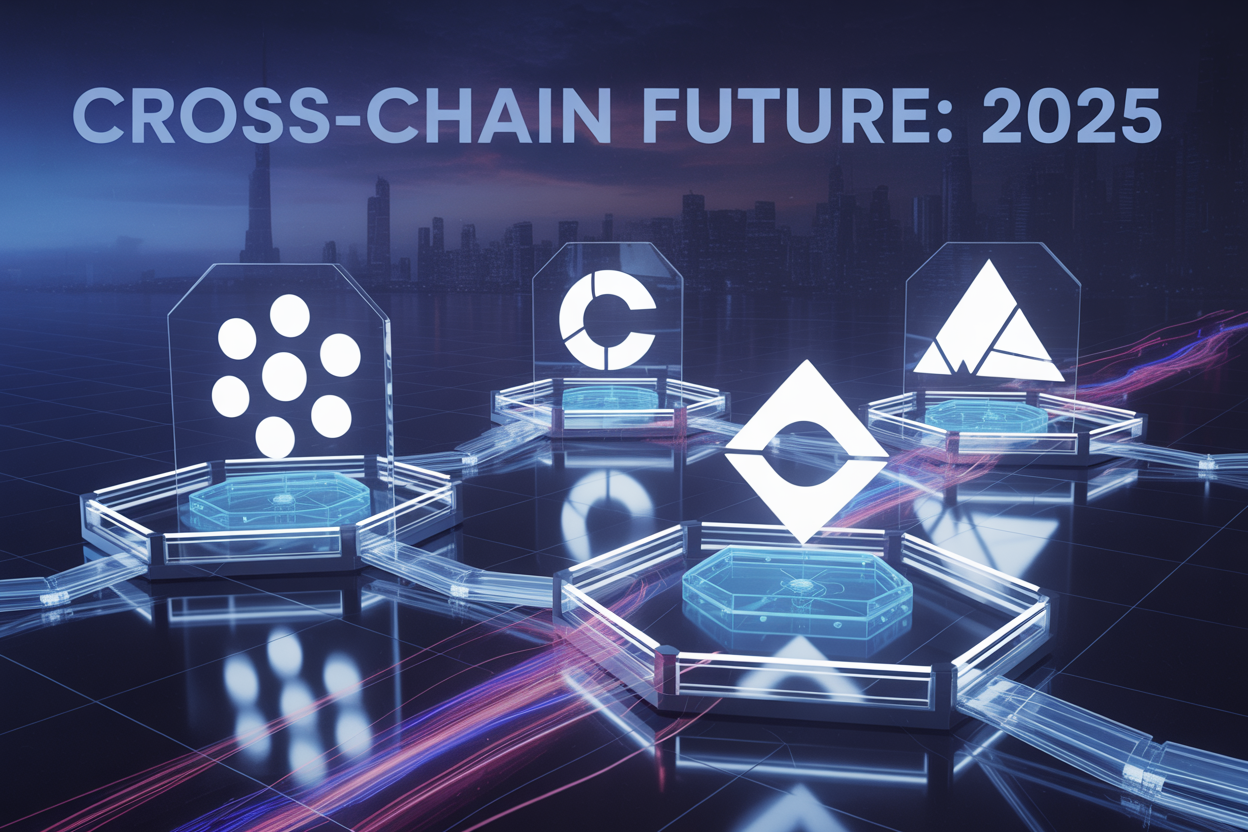Intrduction
Modular blockchains are changing how Web3 scales to serve millions of users. This guide helps developers, crypto enthusiasts, and blockchain investors understand the building blocks of next-generation blockchain architecture. We’ll break down how modular systems separate blockchain functions to improve performance, explore scaling solutions that boost transaction speeds, and explain data availability layers that keep networks secure while handling more users. Ready to discover how modular blockchains are solving Web3’s biggest challenges?
Understanding Modular Blockchain Architecture

Core Components of Modular Blockchains
Modular blockchains break down blockchain functionality into specialized layers that work together—unlike their monolithic cousins that try to do everything at once.
The four key components are:
- Execution Layer: Processes transactions and handles state changes. Think of it as the computer that runs all the calculations.
- Settlement Layer: Verifies transactions and finalizes them. It’s like the notary that says “yep, this actually happened.”
- Consensus Layer: Ensures all nodes agree on the state of the blockchain. This is your committee reaching agreement on what’s true.
- Data Availability Layer: Makes sure transaction data is accessible to everyone who needs it. It’s the public record everyone can check.
The magic happens when these layers can mix and match. Need more speed? Optimize your execution layer. Want better security? Beef up your settlement layer.
Benefits Over Monolithic Blockchain Designs
The old way of building blockchains was like buying an all-in-one printer that does scanning, copying, and faxing—jack of all trades, master of none.
Modular designs crush monolithic ones in three big ways:
- Scalability without sacrificing security. When one layer gets congested, it doesn’t bog down the entire system.
- Specialized optimization. Each layer can be tuned for what it does best instead of compromising.
- Parallel innovation. Teams can improve individual components without needing consensus from the entire ecosystem.
A real-world example? Ethereum’s shift toward a modular design has already started increasing its transaction throughput from about 15 TPS to potentially thousands.
Evolution from Traditional Blockchain Models
Blockchain architecture didn’t start with modular designs. We’ve gone through three distinct phases:
- Bitcoin Era (2009): Single-purpose chains doing one thing really well.
- Ethereum Era (2015): General-purpose monolithic chains trying to handle everything—execution, consensus, and data all bundled together.
- Modular Era (2021-Present): Breaking apart blockchain functions into specialized layers that can scale independently.
This evolution wasn’t just a random design choice. It came from hitting real limitations. When Ethereum gas fees shot through the roof during NFT booms, it became painfully obvious that monolithic designs had a ceiling.
Key Players in the Modular Blockchain Space
The modular blockchain landscape is heating up fast with several projects leading the charge:
- Celestia: Pioneering data availability layers that other chains can plug into
- Polygon Avail: Building modular data availability solutions for the Polygon ecosystem
- Fuel: Creating blazing-fast execution layers with parallel transaction processing
- Optimism: Developing modular rollups that leverage Ethereum’s security
- Arbitrum: Building rollup technology that processes transactions off-chain
- dYdX: Moving from Ethereum to its own Cosmos-based modular chain for better performance
What makes these players stand out isn’t just their tech—it’s their focus. Instead of building yet another general-purpose blockchain, they’re creating specialized components that excel at specific functions within the broader ecosystem.
Scaling Solutions for Web3

Layer 2 Technologies and Their Role
Web3 is hitting a wall. Too many users, not enough space. Enter Layer 2 – the superhero sidekick to blockchain’s main character.
Layer 2s are built on top of existing blockchains (Layer 1s like Ethereum) to handle the heavy lifting. They process transactions off the main chain and only report back when necessary. Think of them as express lanes that bypass the traffic.
The magic? They inherit the security of the base layer while dramatically improving speed and cutting costs. Arbitrum and Optimism are crushing it right now, handling thousands of transactions that would otherwise clog Ethereum.
Rollups, Sidechains, and State Channels Explained
Three major players dominate the scaling game:
Rollups: Bundle hundreds of transactions into one compact package before sending it back to the main chain. They come in two flavors:
- Optimistic Rollups: Assume transactions are valid until proven otherwise
- ZK Rollups: Use fancy math proofs to verify everything’s legit
Sidechains: Independent blockchains with their own consensus rules that connect to the main chain. Polygon started here before expanding its toolkit.
State Channels: Private highways between users that only touch the main chain when opening or closing. Lightning Network on Bitcoin is the poster child here.
Here’s how they stack up:
| Solution | Speed | Security | Cost | Complexity |
|---|---|---|---|---|
| Rollups | Very High | High | Low | Medium |
| Sidechains | High | Medium | Very Low | Low |
| State Channels | Extreme | Medium | Nearly Zero | High |
Interoperability Between Modular Components
The modular blockchain revolution isn’t just about building faster chains – it’s about making them talk to each other.
Cross-chain bridges are the current standard, letting assets jump between chains. But they’re far from perfect. Bridge hacks have drained billions from crypto users.
The real game-changers are emerging protocols like IBC (Inter-Blockchain Communication) and Axelar, which create standardized ways for blockchains to communicate securely.
Modular chains are taking interoperability to the next level by letting developers mix and match execution layers, settlement layers, and data availability layers based on their specific needs.
Transaction Throughput Improvements
Traditional blockchains process maybe dozens of transactions per second. Visa handles thousands. That gap needs closing.
Modular blockchains are smashing through these limitations:
- Celestia separates ordering from execution
- Polygon’s zkEVM processes transactions at warp speed
- Arbitrum can hit 40,000+ TPS in ideal conditions
The sharding approach (splitting the chain into parallel segments) multiplies throughput by letting the network process many transactions simultaneously.
Data availability sampling lets nodes verify the chain without downloading the entire history – a massive breakthrough for scalability.
Cost Reduction Strategies
Gas fees on Ethereum during peak times? Ridiculous. Nobody wants to pay $50 for a $5 transaction.
Modular blockchains slash costs through:
- Batching transactions (one fee for many actions)
- Purpose-built execution environments that optimize for specific tasks
- Data compression techniques that reduce on-chain footprints
- Fee markets that better balance network demand
Some Layer 2s have cut costs by over 90% compared to base layers, making Web3 accessible to everyone, not just the crypto-rich.
The most exciting development? Chains with predictable, stable fees that businesses can actually build around without fear of sudden cost explosions.
Data Availability and Consensus Mechanisms

A. Separating Consensus from Execution
The monolithic blockchain model is showing its age. When one chain tries to do everything—consensus, execution, data storage—it’s like trying to be a jack of all trades but master of none.
Modular blockchains flip this script by separating consensus from execution. Think of consensus as agreeing on what happened, while execution is actually processing those transactions.
By splitting these functions:
- Specialization: Each layer can optimize for its specific job
- Scalability: Execution layers can process transactions in parallel
- Flexibility: Developers can mix and match components based on their needs
This separation isn’t just theoretical—it’s transforming how blockchains handle throughput. When execution isn’t bottlenecked by consensus, transaction speeds can skyrocket from dozens to thousands per second.
B. Data Availability Layers Explained
Data availability is the unsung hero of modular blockchains. It answers one critical question: can I access the data I need to verify what happened on-chain?
These specialized layers ensure transaction data is:
- Published: Made available to the network
- Accessible: Can be retrieved when needed
- Guaranteed: Protected against censorship or deletion
Some projects tackle this by using sampling techniques—you don’t need to download the entire blockchain, just enough random samples to be statistically confident the data exists.
Others use data availability committees, rollup solutions, or even leverage existing blockchains as their DA layer.
The magic happens when these systems allow lightweight clients to verify transactions without downloading everything—making blockchain interaction possible on your phone, not just powerful servers.
C. Proof Systems for Modular Blockchains
Proof systems are the secret sauce that makes modular blockchains trustworthy. They let you verify computation without redoing all the work.
The main players in this space:
| Proof Type | Strengths | Trade-offs |
|---|---|---|
| ZK-SNARKs | Ultra-compact proofs, privacy-preserving | Complex setup, computational intensity |
| ZK-STARKs | No trusted setup, quantum-resistant | Larger proof sizes |
| Optimistic | Simpler implementation, compatibility | Longer challenge periods |
| Validity | Immediate finality | Higher computational costs |
Zero-knowledge proofs are particularly revolutionary—they can prove a statement is true without revealing any information beyond that fact.
The technical complexity behind these systems is enormous, but the user experience they enable is simple: faster transactions, lower fees, and trustless interactions across different blockchain environments.
When combined with proper data availability and consensus separation, these proof systems form the backbone of Web3’s scaling future.
Building Applications on Modular Blockchains

Development Frameworks and Tools
Building on modular blockchains isn’t rocket science anymore. Several frameworks have emerged that make developers’ lives easier:
- Celestia SDK: Purpose-built for data availability layers with simplified validation
- Polygon CDK: Lets you customize your chain with specific execution environments
- Fuel Network Tools: Optimized for parallel transaction processing with their Sway language
Most teams are gravitating toward these specialized toolkits rather than trying to build everything from scratch. Why? Because they handle the complex cross-module communication that would otherwise be a nightmare.
Smart Contract Deployment Strategies
Gone are the days of one-size-fits-all deployments. With modular chains, you need to think strategically:
// Example deployment pattern for a cross-layer application
contract ModularApp {
// Core logic on execution layer
function processTransaction() external {
// Verify data from DA layer
require(DALayer.verifyProof(txData), "Invalid data");
// Execute business logic
// ...
}
}
The smart move? Deploy core logic on execution layers while keeping data-heavy operations on dedicated data availability layers.
Optimizing for Different Modular Components
Each modular component has its sweet spot:
| Component | What to Optimize | What to Avoid |
|---|---|---|
| Execution | Complex computation | Large data storage |
| Data Availability | Bulk data | Heavy computation |
| Settlement | Critical state transitions | Frequent updates |
Think of it like moving into a new house – you wouldn’t store your winter clothes in the kitchen, right?
Case Studies of Successful Modular dApps
The proof is in the pudding. Take Espresso Systems – they built a DeFi platform that processes 10,000+ TPS by splitting transaction validation and data storage across specialized layers.
Or look at Eclipse – their gaming applications handle millions of in-game assets by keeping the core game logic on execution layers while storing player inventories on optimized data layers.
These aren’t just minor improvements – we’re talking 100x better performance than traditional monolithic approaches.
The Future of Modular Blockchain Technology

A. Upcoming Protocol Innovations
The modular blockchain space is evolving at breakneck speed. Right now, developers are cooking up some game-changing innovations that’ll reshape how we think about Web3 scaling.
Zero-knowledge proofs are getting faster and more practical by the day. Teams are shrinking proof generation times from hours to minutes, making ZK-rollups viable for more complex applications.
Cross-domain messaging protocols are another hot area. These will allow different execution layers to communicate seamlessly, creating a network of specialized blockchains that can share data and value without clunky bridges.
Data availability sampling is getting supercharged too. Soon, light clients running on mobile phones will be able to verify massive amounts of blockchain data with minimal resources.
B. Potential Industry Applications
Modular blockchains aren’t just tech for tech’s sake – they’re opening doors to real-world use cases that were impossible before.
Financial services are the obvious first movers. Think high-frequency trading that settles instantly on specialized execution layers with fees measured in fractions of a penny.
Gaming is primed for a revolution too. Imagine AAA-quality games with thousands of players interacting in real-time, with in-game economies running on purpose-built chains that hook into broader liquidity networks.
Supply chain management becomes genuinely transformative when you can have purpose-built verification layers that track products from factory to consumer, with each participant only needing to run minimal hardware.
Enterprise applications get interesting when companies can deploy private execution environments that selectively publish proofs to public validation networks.
C. Challenges and Limitations to Overcome
Modular blockchains aren’t all sunshine and rainbows. Several tough challenges stand in the way of mainstream adoption.
The UX is still a nightmare for average users. Navigating between different layers, understanding where your assets live, and managing security across multiple environments remains complex.
Security assumptions get murky in modular systems. When your transaction touches 3-4 different specialized layers, understanding the trust model becomes exponentially harder.
Composability suffers in certain modular designs. DeFi protocols that need atomic execution across multiple applications can struggle when those apps live on different execution layers.
And synchronization between layers introduces latency that can kill certain applications. Time-sensitive operations might still need everything on a single chain.
D. Investment Opportunities in the Modular Ecosystem
Smart money is pouring into the modular blockchain space – and not just into the obvious layer-1 protocols.
Infrastructure providers offering simplified developer tooling for building across modular stacks are seeing massive interest. These “picks and shovels” plays often outperform the underlying protocols.
Specialized execution layers focused on specific verticals (gaming, DeFi, identity) present interesting token opportunities as they capture value from applications built on top.
Middleware protocols that solve cross-domain composability challenges are particularly undervalued right now. These will become the critical connective tissue of the modular future.
Liquid staking derivatives tied to modular validation layers offer attractive yield opportunities with better risk profiles than traditional monolithic staking.

Modular blockchains represent a revolutionary approach to solving blockchain’s persistent scalability challenges. By separating key functions like execution, settlement, consensus, and data availability into specialized layers, these architectures enable unprecedented throughput while maintaining security and decentralization. The flexibility of modular designs allows developers to optimize each component independently, creating more efficient and adaptable Web3 applications.
As the blockchain ecosystem continues to evolve, modular architectures will likely become the foundation for mainstream Web3 adoption. Projects building on modular frameworks today are positioned to benefit from enhanced scalability, reduced costs, and improved user experiences. Whether you’re a developer, investor, or blockchain enthusiast, understanding and leveraging modular blockchain technology will be essential in shaping the next generation of decentralized applications and services.





